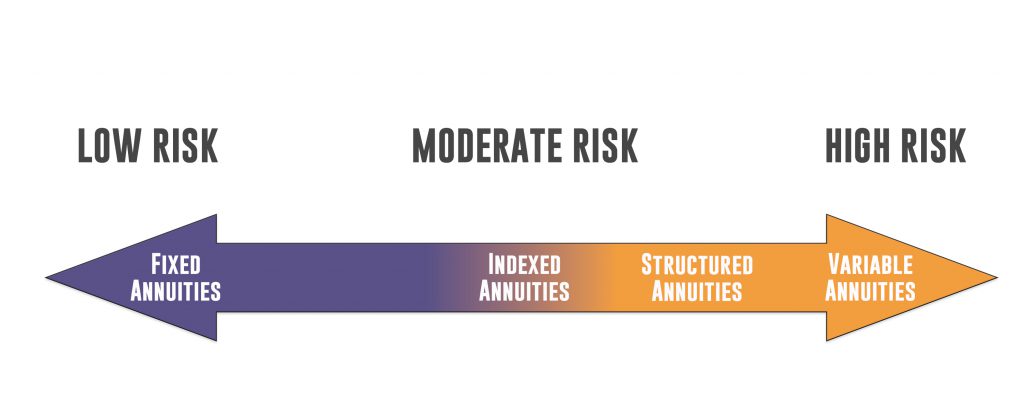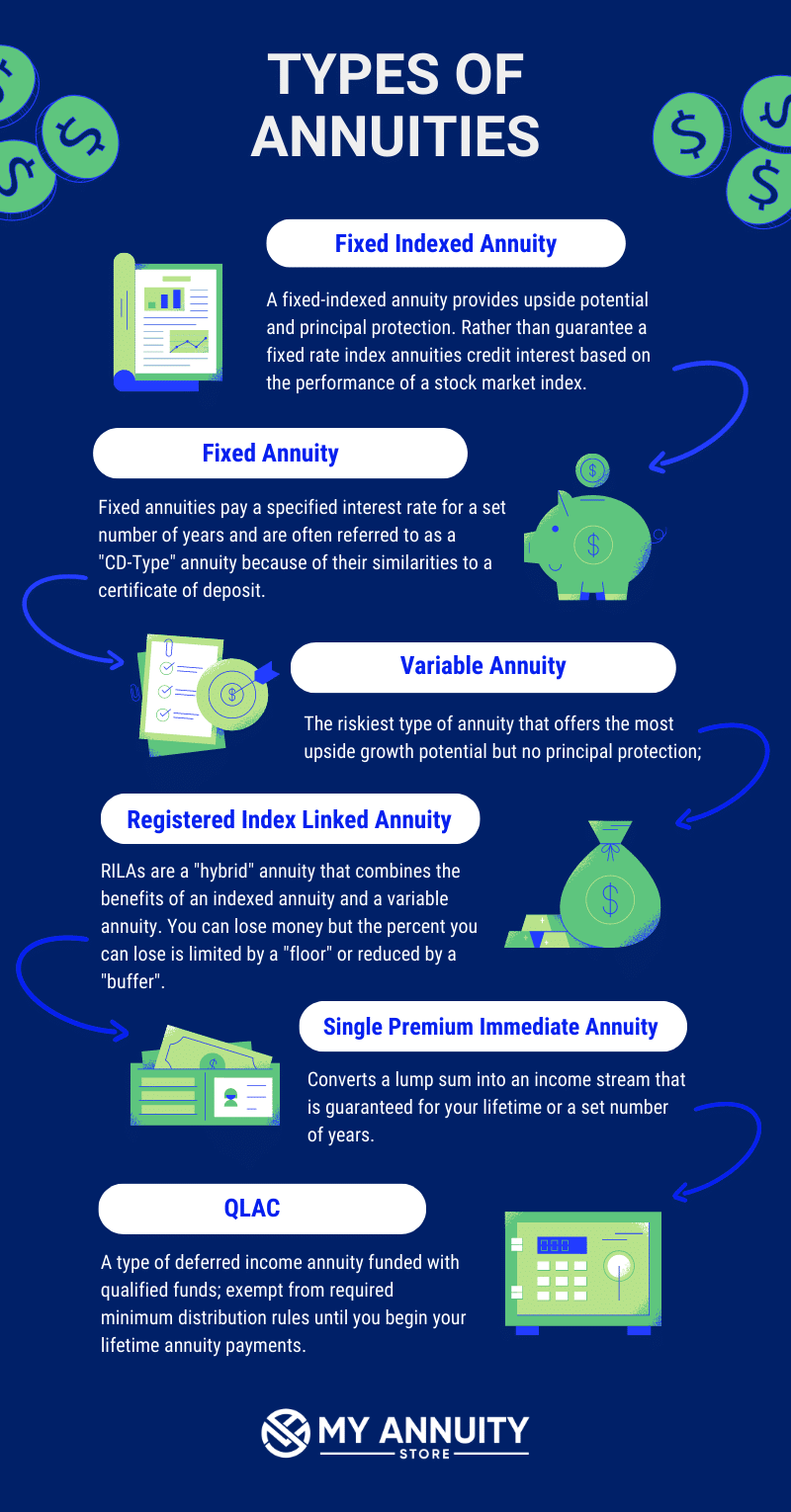All Categories
Featured
Table of Contents
Equally as with a dealt with annuity, the proprietor of a variable annuity pays an insurance provider a round figure or collection of repayments in exchange for the pledge of a series of future settlements in return. But as discussed above, while a dealt with annuity grows at a guaranteed, constant price, a variable annuity expands at a variable rate that relies on the efficiency of the underlying financial investments, called sub-accounts.

Throughout the buildup stage, properties purchased variable annuity sub-accounts grow on a tax-deferred basis and are taxed only when the contract proprietor takes out those earnings from the account. After the build-up stage comes the earnings phase. In time, variable annuity assets should theoretically enhance in worth up until the agreement proprietor decides he or she would like to begin withdrawing cash from the account.
The most considerable concern that variable annuities normally existing is high cost. Variable annuities have several layers of costs and expenditures that can, in aggregate, create a drag of up to 3-4% of the contract's value each year.
Breaking Down Fixed Index Annuity Vs Variable Annuities A Closer Look at How Retirement Planning Works Defining the Right Financial Strategy Benefits of Deferred Annuity Vs Variable Annuity Why Fixed Vs Variable Annuity Pros Cons Can Impact Your Future Variable Annuity Vs Fixed Indexed Annuity: How It Works Key Differences Between Retirement Income Fixed Vs Variable Annuity Understanding the Rewards of Annuities Variable Vs Fixed Who Should Consider Variable Vs Fixed Annuity? Tips for Choosing Variable Vs Fixed Annuities FAQs About Fixed Vs Variable Annuities Common Mistakes to Avoid When Planning Your Retirement Financial Planning Simplified: Understanding Your Options A Beginner’s Guide to Fixed Indexed Annuity Vs Market-variable Annuity A Closer Look at Fixed Income Annuity Vs Variable Annuity
M&E cost charges are determined as a percent of the contract worth Annuity issuers pass on recordkeeping and other management expenses to the contract owner. This can be in the type of a level yearly cost or a percentage of the contract worth. Management costs may be consisted of as part of the M&E risk fee or might be analyzed individually.
These costs can range from 0.1% for passive funds to 1.5% or more for proactively taken care of funds. Annuity contracts can be tailored in a number of methods to offer the particular needs of the contract proprietor. Some typical variable annuity riders include ensured minimal build-up advantage (GMAB), assured minimum withdrawal advantage (GMWB), and guaranteed minimal income benefit (GMIB).

Variable annuity payments provide no such tax deduction. Variable annuities often tend to be extremely inefficient cars for passing wealth to the future generation since they do not take pleasure in a cost-basis change when the initial agreement proprietor passes away. When the owner of a taxable financial investment account dies, the expense bases of the financial investments held in the account are gotten used to mirror the marketplace prices of those financial investments at the time of the owner's fatality.
Analyzing Fixed Interest Annuity Vs Variable Investment Annuity A Comprehensive Guide to Investment Choices Breaking Down the Basics of Fixed Interest Annuity Vs Variable Investment Annuity Pros and Cons of Fixed Index Annuity Vs Variable Annuities Why Choosing the Right Financial Strategy Is Worth Considering How to Compare Different Investment Plans: A Complete Overview Key Differences Between Different Financial Strategies Understanding the Rewards of Long-Term Investments Who Should Consider Strategic Financial Planning? Tips for Choosing Fixed Income Annuity Vs Variable Growth Annuity FAQs About Variable Annuity Vs Fixed Annuity Common Mistakes to Avoid When Choosing Fixed Vs Variable Annuities Financial Planning Simplified: Understanding Your Options A Beginner’s Guide to Smart Investment Decisions A Closer Look at How to Build a Retirement Plan
As a result, successors can acquire a taxed financial investment profile with a "tidy slate" from a tax point of view. Such is not the situation with variable annuities. Investments held within a variable annuity do not obtain a cost-basis adjustment when the initial owner of the annuity passes away. This indicates that any collected unrealized gains will be passed on to the annuity owner's beneficiaries, in addition to the linked tax obligation concern.
One substantial problem associated with variable annuities is the capacity for disputes of passion that might feed on the part of annuity salespeople. Unlike a financial advisor, that has a fiduciary obligation to make financial investment decisions that benefit the client, an insurance coverage broker has no such fiduciary responsibility. Annuity sales are very rewarding for the insurance policy experts who market them as a result of high in advance sales compensations.

Numerous variable annuity agreements have language which puts a cap on the portion of gain that can be experienced by particular sub-accounts. These caps stop the annuity owner from completely taking part in a part of gains that could otherwise be appreciated in years in which markets produce considerable returns. From an outsider's perspective, presumably that financiers are trading a cap on financial investment returns for the abovementioned assured flooring on financial investment returns.
As noted above, surrender costs can badly restrict an annuity owner's ability to move possessions out of an annuity in the very early years of the agreement. Even more, while most variable annuities enable contract proprietors to take out a defined amount throughout the build-up phase, withdrawals yet quantity generally lead to a company-imposed charge.
Withdrawals made from a set rates of interest financial investment alternative can additionally experience a "market price change" or MVA. An MVA adjusts the value of the withdrawal to mirror any modifications in rate of interest prices from the time that the cash was invested in the fixed-rate choice to the time that it was withdrawn.

On a regular basis, also the salesmen who market them do not fully comprehend exactly how they work, therefore salespeople often exploit a buyer's feelings to market variable annuities instead than the qualities and suitability of the products themselves. We think that financiers ought to fully understand what they possess and just how much they are paying to own it.
Breaking Down Your Investment Choices A Closer Look at How Retirement Planning Works What Is the Best Retirement Option? Features of Fixed Income Annuity Vs Variable Annuity Why Fixed Income Annuity Vs Variable Annuity Is Worth Considering How to Compare Different Investment Plans: Explained in Detail Key Differences Between Different Financial Strategies Understanding the Key Features of Long-Term Investments Who Should Consider Fixed Vs Variable Annuity Pros Cons? Tips for Choosing the Best Investment Strategy FAQs About Planning Your Financial Future Common Mistakes to Avoid When Planning Your Retirement Financial Planning Simplified: Understanding Your Options A Beginner’s Guide to Fixed Income Annuity Vs Variable Annuity A Closer Look at How to Build a Retirement Plan
The very same can not be stated for variable annuity properties held in fixed-rate investments. These assets legally come from the insurer and would as a result go to danger if the firm were to fall short. In a similar way, any warranties that the insurance provider has actually agreed to supply, such as an ensured minimal income benefit, would be in inquiry in the occasion of a company failing.
Possible buyers of variable annuities need to understand and think about the financial problem of the releasing insurance company before entering into an annuity contract. While the advantages and disadvantages of numerous types of annuities can be disputed, the actual concern bordering annuities is that of viability.
As the claiming goes: "Buyer beware!" This article is prepared by Pekin Hardy Strauss, Inc. Choosing between fixed and variable annuities. ("Pekin Hardy," dba Pekin Hardy Strauss Wealth Administration) for informational functions only and is not planned as an offer or solicitation for organization. The information and data in this article does not constitute legal, tax obligation, bookkeeping, investment, or various other professional recommendations
Table of Contents
Latest Posts
Understanding Retirement Income Fixed Vs Variable Annuity A Comprehensive Guide to Variable Vs Fixed Annuities Breaking Down the Basics of Investment Plans Features of Smart Investment Choices Why Fix
Breaking Down Fixed Vs Variable Annuity Everything You Need to Know About Fixed Indexed Annuity Vs Market-variable Annuity What Is the Best Retirement Option? Pros and Cons of Various Financial Option
Understanding Fixed Annuity Vs Equity-linked Variable Annuity Key Insights on Your Financial Future Defining Annuities Fixed Vs Variable Pros and Cons of Annuity Fixed Vs Variable Why Variable Annuity
More
Latest Posts